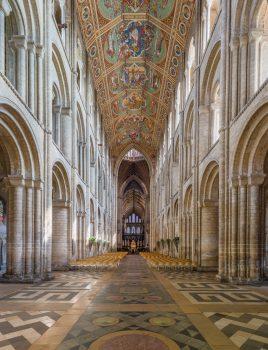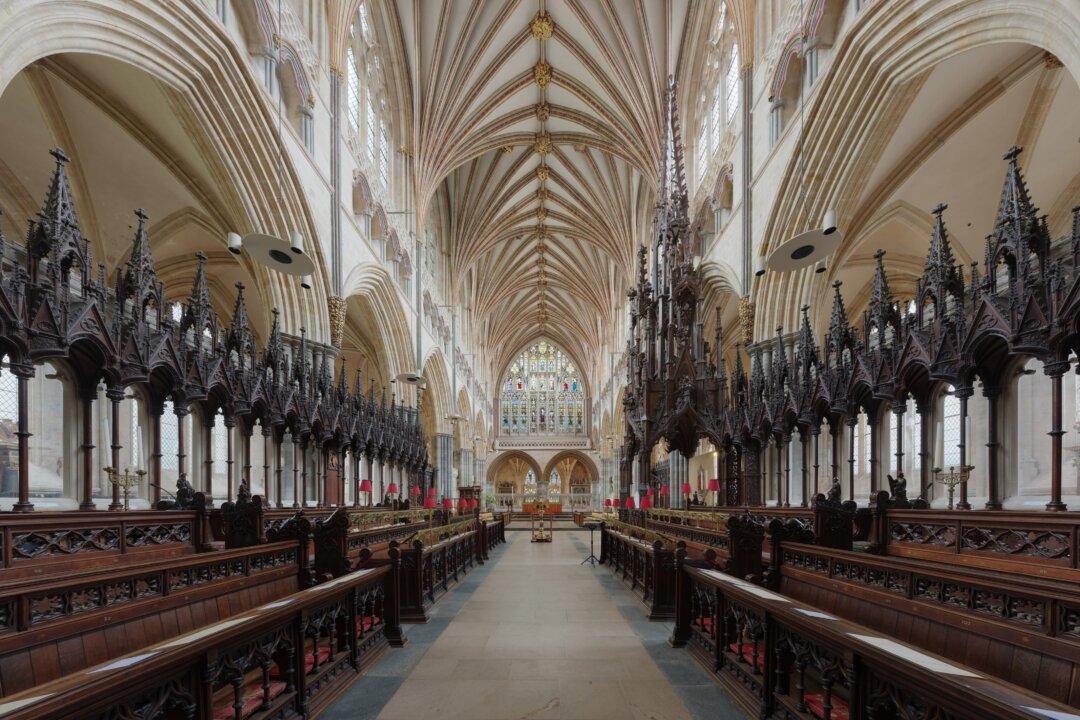
The nave of Ely Cathedral in Cambridgeshire, England. The building dates back to 1083, and cathedral status was granted in 1109 when it was named the Church of St Etheldreda and St Peter. DAVID ILIFF/CC-BY-SA 3.0
In many parts of England, cathedrals face a financial crisis: They are expensive to maintain, often need renovations, and are almost entirely self-funded—which means they are under constant pressure to raise more money and attract new visitors. If they don’t, they run the risk of spiraling into irrelevance and disrepair.

